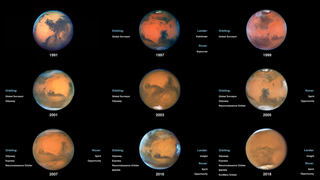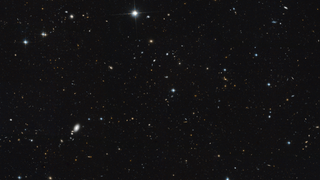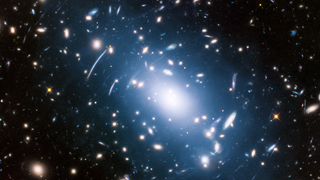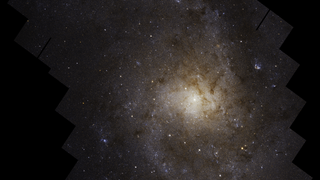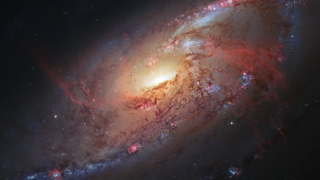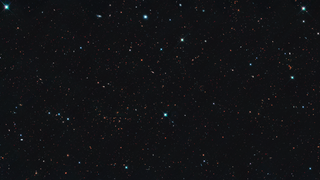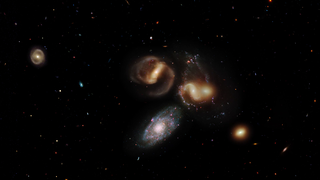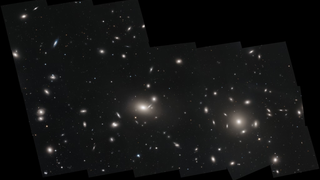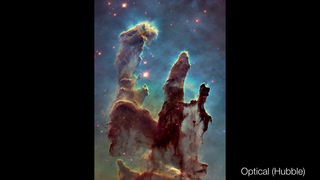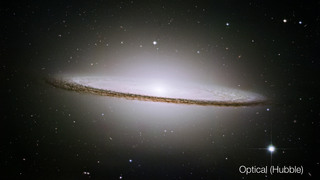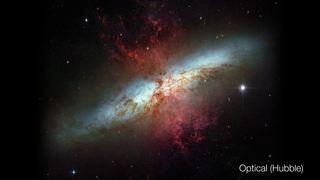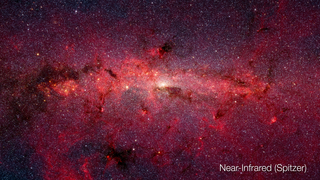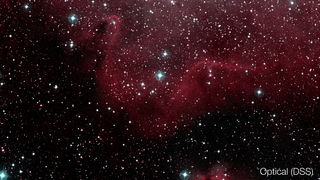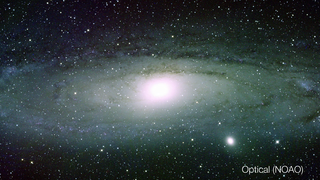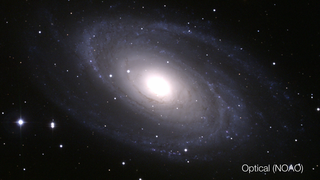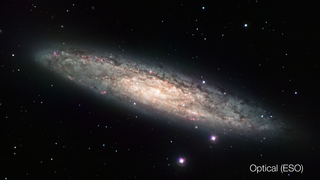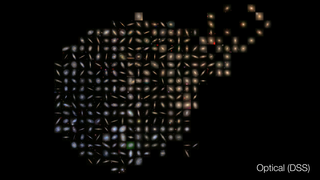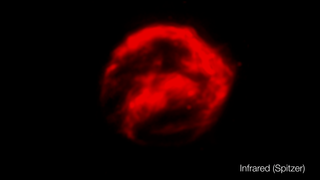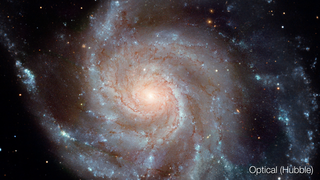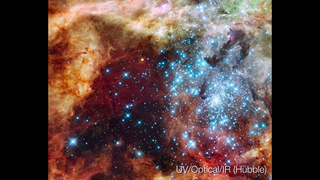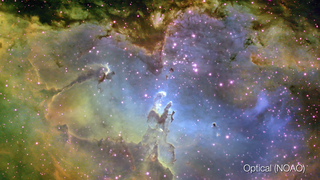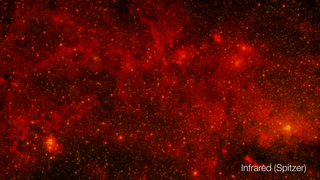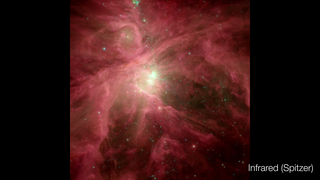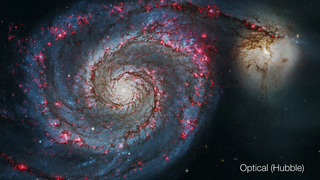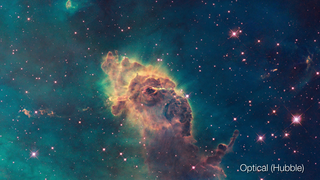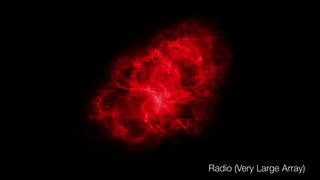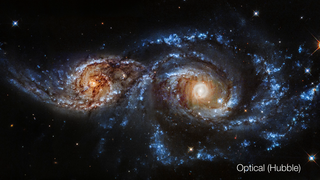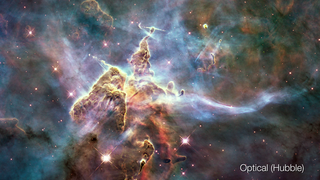Whale Galaxy Panorama
The “head” of the whale here is the galactic center, which is lit up with star birth and gas heated from supernova explosions. This bright light silhouettes bands of dense, darker material that lie between the Whale and us.
Toward the tail there is less dust but still areas of bright blue star formation, driven by interactions with neighboring galaxies. As gas and dust from different galaxies meet in space, denser areas are created, which gravity compacts into new stars.
This is a spiral galaxy seen from the side, or edge-on. This is similar to how we view the Milky Way from our position inside it—we see one of the spiral arms stretching across the sky. The Whale galaxy is actually similar in size to the Milky Way; the area we are seeing here is about 140,000 light-years across.
Related
Credits
Leann Johnson (Global Science and Technology, Inc.): Technical Support
NASA/Hubble Space Telescope/ESA
https://svs.gsfc.nasa.gov/31016
Mission:
Hubble
Data Used:
Hubble Space Telescope
Observed DataKeywords:
SVS >> Dust
SVS >> Galaxy
SVS >> Gravity
SVS >> Milky Way
SVS >> Hyperwall
SVS >> Supernova
SVS >> Star
NASA Science >> Universe
